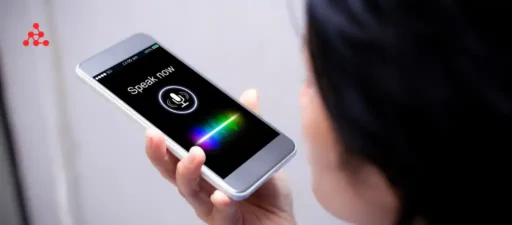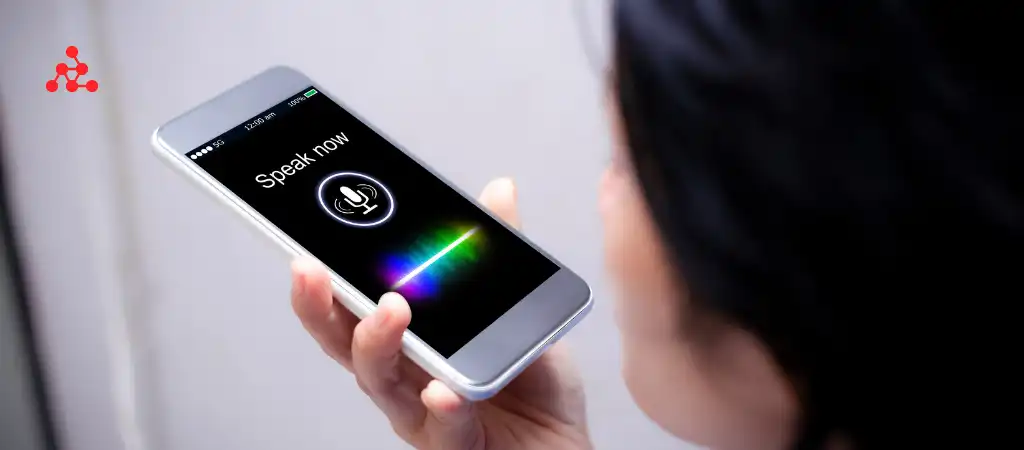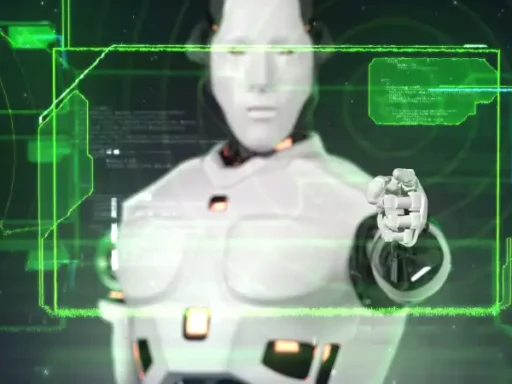Speech recognition technology, also known as automatic speech recognition (ASR) or voice recognition, has evolved tremendously over the past few decades. It allows machines to interpret human speech, making it possible to interact with digital devices using voice commands. As a result, more people have embraced speech recognition for various applications, from virtual assistants and customer service to healthcare and accessibility tools.
This guide will explore how many people use speech recognition, examine its benefits, challenges, and global reach, and provide insights into the future of this technology.
What is Speech Recognition?
Speech recognition refers to the process of converting spoken language into text using computer algorithms. This technology allows machines to “understand” spoken language and carry out commands based on what is said. It uses complex processes, including sound wave analysis, linguistic pattern recognition, and artificial intelligence (AI), to interpret human speech.
How Does It Work?
Speech recognition works by capturing audio, converting it into a digital format, and then processing it using models of language and speech patterns.
There are different types of speech recognition systems, including:
-
Speaker-dependent systems
These systems are trained to recognize specific voices and require some voice training.
-
Speaker-independent systems
These systems can recognize speech from multiple speakers without needing any prior training.
-
Continuous speech recognition
This system can understand fluent speech, unlike discrete speech recognition, which requires users to pause between words.
Speech recognition technology is commonly used in virtual assistants like Apple’s Siri, Google Assistant, Amazon’s Alexa, and Microsoft’s Cortana.
How Many People Use Speech Recognition?
Global Adoption of Speech Recognition
Speech recognition has seen massive adoption globally, thanks to its integration into smartphones, smart devices, and various industries. The rise of virtual assistants and the push for more hands-free technologies have made speech recognition an integral part of everyday life.
As of 2023, hundreds of millions of people use speech recognition daily, whether through voice-activated virtual assistants, speech-to-text services, or for other purposes. A report by Statista estimated that over 1 billion devices globally use voice recognition technology, including smartphones, smart speakers, cars, and wearable devices.
Popular Devices with Speech Recognition
-
Smartphones
Almost every modern smartphone comes equipped with speech recognition software. Apple’s Siri, Google’s Assistant, and Samsung’s Bixby are all prominent examples.
-
Smart Speakers
Amazon Alexa, Google Home, and Apple’s Home Pod have made voice commands a central part of controlling smart home ecosystems.
-
Wearables
Devices like smartwatches, fitness trackers, and even smart glasses now offer voice control.
-
Cars
Speech recognition is increasingly integrated into automotive systems, allowing drivers to make calls, send messages, and control navigation without taking their hands off the wheel.
Usage in Different Demographics
The usage of speech recognition technology varies across age groups, geographic regions, and industries:
-
Young Adults
Millennials and Gen Z are among the heaviest users of speech recognition due to their comfort with technology and the increasing integration of voice features into everyday devices.
-
Seniors
Older generations, particularly those with vision or mobility issues, benefit from voice recognition for its hands-free and accessibility features.
-
Businesses
Companies in industries such as healthcare, customer service, and education use speech recognition to streamline operations, enhance accessibility, and improve customer experience.
Statistics on Usage
According to research, nearly 40% of U.S. adults use voice search daily on their smartphones. In addition, 58% of consumers have used voice search to find local business information. Globally, over 40% of people have tried voice-activated assistants, and it’s predicted that the number of virtual assistant users will surpass 1.8 billion by 2025.
Voice Search in Everyday Life
The use of voice search is one of the most common applications of speech recognition. As more people integrate smart speakers and virtual assistants into their daily routines, tasks like setting alarms, controlling lights, and playing music are increasingly performed by speaking a command.
Speech Recognition in Accessibility
Speech recognition plays a crucial role in improving accessibility for individuals with disabilities. People with visual impairments or mobility limitations often rely on voice commands to interact with technology. In fact, many people use speech recognition to enhance their ability to communicate and navigate digital environments.
Why Do So Many People Use Speech Recognition?
Hands-Free Convenience
One of the primary reasons many people use speech recognition is for its convenience. Speech recognition allows users to perform tasks hands-free, making it possible to interact with their devices without needing to physically touch them. This is especially useful while driving, cooking, or multitasking.
Speed and Efficiency
Speaking is often faster than typing, and voice commands allow users to complete tasks more quickly. For example, dictating a text message or searching for something online can be done in seconds with voice commands, as opposed to typing.
Accessibility for All
Speech recognition breaks down barriers for people who may have difficulty typing due to disabilities, injuries, or age-related challenges. This accessibility is one of the key reasons so many people use speech recognition, as it enables individuals to engage with technology in ways that were previously impossible.
Applications of Speech Recognition Technology
Virtual Assistants
Virtual assistants like Siri, Google Assistant, and Alexa are perhaps the most well-known examples of speech recognition technology. These assistants can perform a wide range of tasks, from sending messages and setting reminders to controlling smart home devices. Many people use speech recognition daily through these assistants to manage their schedules and tasks.
Healthcare
In the healthcare industry, speech recognition is used for dictating patient notes, medical transcriptions, and even voice-controlled medical devices. It helps healthcare professionals reduce paperwork and focus more on patient care. According to estimates, more than 85% of doctors in the United States use some form of speech recognition in their practice.
Customer Service and Call Centers
Many companies use speech recognition technology in call centers to automate customer service tasks. Interactive voice response (IVR) systems allow customers to speak their queries, which the system interprets to provide the necessary assistance. This reduces wait times and improves the efficiency of customer service operations.
Education and Learning
Speech recognition is increasingly used in educational settings, particularly for students with learning disabilities. It can help students take notes, dictate essays, and interact with digital educational tools. Additionally, language learners often use speech recognition to practice pronunciation and improve their fluency in new languages.
Challenges in Speech Recognition Adoption
Accuracy Issues
One of the main challenges with speech recognition technology is accuracy. While the technology has come a long way, it can still struggle with accents, dialects, background noise, and certain speech impediments. These issues can be frustrating for users and may limit the technology’s effectiveness.
Privacy Concerns
With the rise of voice-activated devices, privacy has become a significant concern. Many people use speech recognition daily without realizing that their voice data is being collected and stored. This has raised concerns about how companies handle and protect user data.
Language Barriers
While speech recognition has made significant progress, it still faces challenges in recognizing and processing less commonly spoken languages and dialects. Although the technology has improved in major languages like English, Spanish, and Mandarin, the same level of accuracy is not always available for other languages.
Dependence on Internet Connectivity
Many speech recognition systems rely on cloud-based processing, which means they require a stable internet connection to function correctly. This can be a limitation in regions with poor connectivity or during situations where users cannot access the internet.
Future of Speech Recognition
Advancements in AI and Machine Learning
The future of speech recognition looks promising, thanks to continued advancements in AI and machine learning. These technologies will help improve the accuracy of speech recognition systems, particularly in challenging environments like noisy backgrounds or in recognizing diverse accents and languages.
Broader Integration into Everyday Devices
As speech recognition technology becomes more sophisticated, we can expect it to be integrated into more everyday devices. Smart home systems, wearable technology, and even appliances like refrigerators and washing machines may soon be controlled entirely through voice commands.
Personalized Voice Assistants
The next step in speech recognition will likely involve more personalized virtual assistants that can recognize individual users’ voices and adapt to their preferences. This could lead to even more seamless and intuitive interactions with technology.
You Might Be Interested In
- How Much Power Does A Robot Vacuum Use?
- What Are 5 Disadvantages Of AI?
- How Does Computer Vision Work?
- How To Use Reverse Proxy Janitor Ai?
- Who Is The First Human Ai?
Conclusion
Speech recognition has transformed the way people interact with technology, offering unprecedented convenience, speed, and accessibility. From virtual assistants to healthcare applications, the technology has become an integral part of daily life for many people around the world.
In 2023, millions, if not billions, of people are using speech recognition technology in one form or another. Despite its challenges, such as accuracy issues and privacy concerns, the future of speech recognition looks promising with advancements in AI and machine learning.
With a global user base in the hundreds of millions, it’s clear that many people use speech recognition every day for a variety of tasks, making it one of the most transformative technologies of the 21st century.
FAQs about How Many People Use Speech Recognition?
How many people use speech recognition?
The number of people using speech recognition has grown significantly due to its integration into various devices such as smartphones, smart speakers, and wearables. According to research, over 1 billion devices globally are equipped with speech recognition technology, which includes virtual assistants like Siri, Google Assistant, Alexa, and Cortana.
These devices have made it easier for users to interact with technology in a hands-free manner, driving widespread usage. A large percentage of smartphone users, particularly in developed countries, rely on voice commands to perform everyday tasks like sending messages, making calls, or even searching for information online.
This growing trend is not limited to smartphones alone; smart speakers like Amazon Echo and Google Home have also gained popularity, further expanding the reach of speech recognition technology into homes.
Many people use speech recognition for its convenience, especially when multitasking or when it’s difficult to use a keyboard or touchscreen. Globally, 40% of adults use voice search daily, and by 2025, it’s expected that there will be 1.8 billion virtual assistant users.
The use of voice-enabled devices has become more than just a convenience for tech-savvy individuals; it has been adopted widely by seniors, individuals with disabilities, and professionals in various sectors. This massive and growing user base is a testament to the increasing reliance on Voice recognition technology in modern life.
Why do so many people use speech recognition?
Many people use Voice recognition because of its hands-free convenience, which allows users to perform tasks faster and more efficiently than traditional methods like typing. For instance, instead of typing out a search query or message, people can simply speak, saving valuable time.
This is particularly useful for those who are on the go, multitasking, or in situations where manual input is inconvenient or unsafe, such as driving. The speed at which voice commands can be processed and executed adds to its appeal, making it a preferred method for users across different devices.
Additionally, Voice recognition provides an accessibility advantage for people with disabilities or those who face physical limitations. For individuals who may have difficulty using keyboards or touchscreens due to conditions like arthritis, paralysis, or visual impairments, Voice recognition allows them to interact with technology in ways that would otherwise be challenging.
The technology has also been a boon for elderly users, who find it easier to navigate devices via voice commands than traditional input methods. Overall, the combination of speed, ease of use, and accessibility is why so many people are drawn to using Voice recognition technology.
What are the most common uses of Voice recognition technology?
Speech recognition technology is most commonly used through virtual assistants such as Siri, Google Assistant, and Alexa. These virtual assistants allow users to set reminders, send messages, search the web, play music, and control smart home devices using voice commands.
Voice search, in particular, has become one of the most popular applications, with users increasingly relying on voice queries to find information quickly and conveniently. In addition to personal tasks, many businesses have integrated Voice recognition into their operations to streamline customer service and improve the user experience, particularly through interactive voice response (IVR) systems in call centers.
Outside of consumer electronics, Voice recognition has found extensive use in healthcare, where doctors and medical professionals use it to dictate patient notes and transcriptions, making the documentation process more efficient.
Educational settings also benefit from this technology, where students can use speech-to-text features for note-taking or to improve language skills. In essence, Voice recognition has penetrated various industries, from home automation to professional services, helping users accomplish a wide range of tasks with greater efficiency and ease.
What challenges does Voice recognition technology face?
Despite its growing popularity, Voice recognition technology still faces several challenges, particularly in terms of accuracy. Accents, dialects, and even background noise can affect the system’s ability to correctly interpret spoken commands.
Although the technology has made strides in recognizing different languages and accents, there are still instances where misinterpretation occurs, leading to frustration for users. Certain speech impediments or fast speech can also pose issues for current systems. These limitations make it difficult for some users to fully rely on Voice recognition technology, especially in professional or critical situations where accuracy is paramount.
Another significant challenge is privacy. Since many Voice recognition systems require constant listening for activation commands (like “Hey Siri” or “OK Google”), concerns have been raised about the potential for devices to inadvertently record conversations. This data collection often raises questions about how companies store, use, and protect voice data.
Additionally, many Voice recognition systems rely on cloud-based processing, which means they need a stable internet connection to function properly. This dependency can be a limiting factor in areas with poor connectivity or during situations where users don’t have access to the internet.
How is Voice recognition used to improve accessibility?
Voice recognition plays a critical role in improving accessibility for individuals with disabilities. For people with visual impairments, the ability to navigate devices, search for information, or send messages without needing to rely on visual input is a game-changer.
Many visually impaired individuals use voice-activated devices to interact with their smartphones, smart speakers, or computers. This hands-free interaction enables them to access the digital world more easily and independently, offering a more inclusive technological environment.
Additionally, individuals with mobility impairments, such as those who cannot easily use a keyboard or mouse, benefit from voice-controlled systems that allow them to perform tasks they would otherwise struggle with.
Moreover, Voice recognition is valuable for people with learning disabilities or conditions like dyslexia, where writing and reading may be more challenging. By using speech-to-text software, these individuals can dictate essays, take notes, or communicate more effectively.
This technology helps bridge the gap between their capabilities and the demands of modern digital communication, offering them greater autonomy and enhancing their educational and professional opportunities. Overall, Voice recognition significantly improves accessibility for various groups, making technology more inclusive for everyone.







